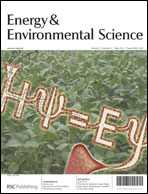DNA-directed growth of FePO4nanostructures on carbon nanotubes to achieve nearly 100% theoretical capacity for lithium-ion batteries†
Abstract
Through the PO43− groups regularly arranged on its sugar-phosphate backbone, DNA is used to direct the growth of a network structure of ultrasmall FePO4


 Please wait while we load your content...
Please wait while we load your content...